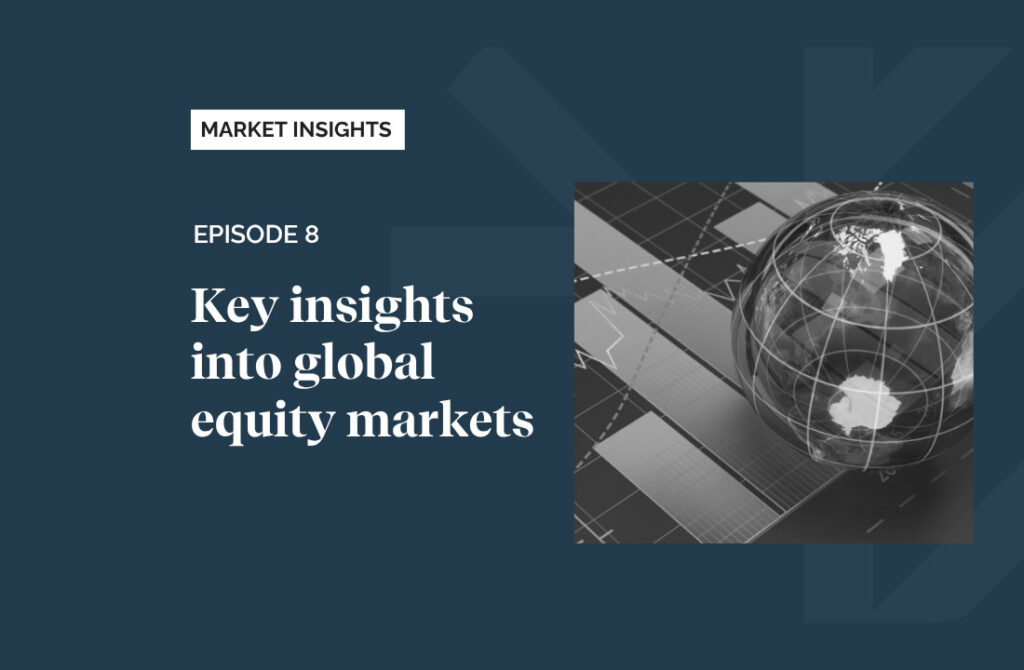Topics
Transcript
Welcome to the first episode of MacroPulse. In this series, we will take you through the major events that shaping the local and global environment. We will start off with the US elections. If you look at the polls, Trump and Harris are very close. Trump has gained in the recent polls, while Harris has lost some ground.
And even some of the swing states, Trump has gained some of the states. So the momentum is clearly in favor of Trump, although Harrison Trump is still at least within one to two points across most polls. The margin of error in most of these polls are around two to 3%. So statistically, they still remain very close. So when we look at what markets are expecting and what markets are pricing in, at this stage, it looks like the markets are pricing in an increased probability that Trump will win the election.
Bond yields have risen. Equity markets have done better, and the US dollar has also strengthened. All on the back of Trump’s policies, which is for potentially loser fiscal policy due to the tax cuts, immigration curbs that will also be slightly inflationary, His policies around trade tariffs, which will also be could be seen as inflationary but bad for global growth, and also the deregulation that he wants to bring into the market. Most of these policies would help profits, corporate profits, but would be bad for global growth and would be slightly inflationary. So bond yields have risen, and equity markets have celebrated to some extent.
But one has to ask the question, how much can bond yields rise before equity markets start to become uncomfortable with the increased levels? The markets also seem to be pricing out, therefore, the amount of cuts that will be coming in the next eighteen months or so. We still think that the that the the Fed ultimately will cut rates twice this year and at least four times next year, so very close to what the market is expecting. But we also believe that the risk that is to the downside because we believe that, ultimately, we will go into a slower growth environment where global growth could potentially still reach something of a let’s call it a a mild recession, in which case we might actually get some more cuts, and the dollar in that environment could potentially weaken. When we go to the local, setting in South Africa, the SARB has also been very cautious to cut interest rates.
We got one cut of 25 basis points, and the SARB has guided that there will potentially more cuts, but but at a slow pace. We had some inflation prints over the last week, which was quite encouraging. The headline inflation print came down to 3.8%, and the core inflation print came down to 4.1%. And due to the fall in fuel prices in October, we expect that the, headline inflation could get to close to 3%, in at the the next print and remain at below 4% until early part of next year. This will put the SARB under more pressure, to start to cut interest rates potentially more aggressively.
And so while the market is pricing in at the moment, about two to three cuts, we believe that ultimately the SARB will end up doing more cuts to provide support to growth in the economy. We also see some other positive signs, coming out of the economy. First of all, the two pot system, it does seem to look like the amount of withdrawals that’s been utilized that will help disposable income, is at the higher end of the scale. That will also support the fiscus to some extent. The IMF has recently increased the growth, outlook for SA slightly, and they look to send a team to SA to do a more deep dive into the growth outlook for South Africa.
And then we’ve also learned that the FATF gray listing, that we’ve made some progress on on that front, and that may potentially maybe taken off that gray list, sometime next year. So we remain constructive on local assets, both equities, bonds, and the currency. So we remain positive on the rent. We think that the flows into the country, the better terms of trade, and also reduced country risk premium will continue to support the currency, in future months. And on the fixed income side, we believe we will continue to see fiscal consolidation, lower inflation, and also the SARB moving to cut rates further that will support, our bond market.
South Africa could also benefit from potential Chinese easing. So in China, what we’ve seen more recently over the last month or so is that the policymakers have definitely made a shift towards supporting the economy. We’ve heard from the Politburo. We’ve heard from several institutions across China that they want to provide support to growth in the country. We’ve seen some rate cuts coming through already.
We’ve seen some support provided to the housing market in the form of reduced mortgage rates, also increased funding to complete projects, also a reduction in down payments, and therefore, you know, the regulation for buying property has improved. And we believe, ultimately, that will help in driving consumer confidence higher. What we look forward to now is the fiscal package that has been widely been discussed. A lot of numbers has been thrown around as to the size of the potential package. We expect that package to be announced in the November and to provide some support to local governments, to the consumer, as well as, you know, to provide some support to the property market.
We think, ultimately, we will see an improvement from a cyclical perspective at least in China, and therefore, we remain constructive on assets that’s relating to China. If we look to next week, it’s gonna be a very important week. First of all, we will have, new fiscal setting out from South Africa. We’ll have the non farm perils in The US. We’ll also get the US elections, and we’ll get the most recent PMI data from across the world, which will provide us with a guide as to the strength of economic growth across several nations.
Taking a step back, ultimately, the political environment, although it’s very uncertain now, should improve over the next few weeks, months. The policy environment remains to be very easy. We will see more easing coming from the big players around the world including South Africa, but the geopolitical environment remains fairly unstable. We have seen in The Middle East, Israel retaliate against Iran, And to some extent, the market has taken that as a little bit of reduction in immediate tension. We’ve seen the oil price come down, but we do expect that that tension could start to rise again post the elections.
And so we keep a very defensive stance when it comes to the geopolitical environment. That’s it for this episode of Macropulse. Be sure to join for the next episode.
FAIRTREE INSIGHTS
You may also be interested in
Explore more commentaries from our thought leaders, offering in-depth analysis, market trends and expert analysis.

Macro Pulse Episode 21
In this episode Jacobus discusses SA equities, SA bonds and the appreciating of the US dollar.

Fairtree Market Insights with Karena Naidu | Episode 8
In this episode, we dive into our Chinese exposure, exploring what’s happening with the major e-commerce players in China. We also take a closer look at the broader emerging markets space, unpacking key trends and where we’re seeing potential growth.

Macro Pulse Episode 20
In this episode, Jacobus discusses major events leading up to year-end, recent US court cases, and the rise in long bond yields.
About you…
By proceeding, I confirm that:
- To the best of my knowledge, and after making all necessary inquiries, I am permitted under the laws of my country of residence to access this site and the information it contains; and
- I have read, understood, and agree to be bound by the Terms and Conditions of Use described below.
- Please beware of fraudulent Whatsapp groups pretending to be affiliated with Fairtree or Fairtree staff members.
If you do not meet these requirements, or are unsure whether you do, please click “Decline” and do not continue.




